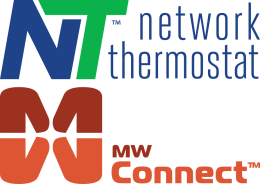How an IoT Temperature Sensor Makes Your HVAC System More Efficient
Integrating Internet of Things (IoT) technology into HVAC systems can dramatically improve efficiency and effectiveness for temperature control in commercial and residential buildings. This article explores how IoT temperature sensor technology improves HVAC systems, providing real-time monitoring, improved accuracy, automated adjustments, energy savings, and increased lifespan.
By understanding the benefits and considerations in choosing the right IoT temperature sensors, building owners can optimize their HVAC systems for better performance and cost savings.
What is an IoT Temperature Sensor?
At the heart of an IoT-enabled HVAC system lies the IoT temperature sensor. This small but powerful device measures temperature accurately and transmits the data to a centralized system or cloud platform for analysis. Depending on the device's design, it may operate using various technologies such as wireless protocols, infrared sensors, or thermocouples.
By continuously monitoring temperature, the IoT temperature sensor provides valuable insights for HVAC system control and optimization.
Benefits of Using IoT Temperature Sensors for HVAC Systems
Real-time Monitoring
IoT temperature sensors enable real-time monitoring of temperature conditions throughout the building. This level of visibility allows building owners and facility managers to promptly identify temperature variations and fluctuations. When building managers receive immediate alerts or notifications, they can take proactive measures to address issues including potential equipment failure.
Improved Accuracy and Precision
Traditional thermostats may provide general temperature readings, but IoT temperature sensors offer enhanced accuracy and precision. They can capture temperature data at specific locations within the building, ensuring more precise control and adjustment of HVAC systems. This fine-grained monitoring allows for targeted temperature management, eliminating hotter and colder spots and ensuring a consistently comfortable environment.
Automated Adjustments
IoT temperature sensors, in conjunction with intelligent HVAC systems like NetX Thermostats, enable automated adjustments based on real-time data. The sensors collect temperature readings and communicate with the HVAC system to make precise and efficient adjustments.
This dynamic control optimizes the HVAC system's operation, adjusting heating or cooling based on the actual temperature in conjunction with preset schedules. As a result, energy consumption is minimized, and occupant comfort is maximized.
Energy Savings
One of the significant advantages of IoT temperature sensors is their ability to contribute to energy savings. By providing accurate and granular temperature data, these sensors enable the HVAC system to operate more efficiently. The system can adjust the heating or cooling output precisely, avoiding unnecessary energy consumption. With the capability to detect temperature changes quickly, IoT temperature sensors prevent energy waste by ensuring that the HVAC system operates only when necessary.
Increased Lifespan of HVAC System
The efficient and optimized operation made possible by IoT temperature sensors also contributes to the extended lifespan of HVAC systems. By minimizing the strain on equipment and preventing unnecessary cycles, these sensors help reduce wear and tear, extending the longevity of vital components. This not only saves money on premature replacements but also reduces maintenance and downtime costs, resulting in long-term savings.
Choosing the Right IoT Temperature Sensor for Your HVAC System
When selecting an IoT temperature sensor for your HVAC system, several factors should be considered. These include compatibility with the existing HVAC infrastructure, communication protocols, installation requirements, and the specific monitoring needs of your building.
You will also want to explore the reputation and reliability of the sensor manufacturer and match the specific device to the environment in which it will be installed. For example, if you only need to monitor the indoor temperature of your property, you’d be happy with the NetX NT-URS. If you’d like the flexibility to monitor the outdoor temperature as well, the NetX NT-URS with an external temperature probe is a more suitable option.
Conclusion
As technology advances, IoT temperature sensors will continue to play a crucial role in optimizing HVAC system performance, enhancing energy efficiency, and ensuring occupant comfort. To explore the full potential of IoT temperature sensors, it is important to consider the specific requirements of your HVAC system and consult with experts in the field. By embracing this innovative technology and harnessing the benefits it brings, you can create a more sustainable, cost-effective, and comfortable environment for building occupants.
For help choosing the right products for you and start maximizing the performance of your HVAC system.




